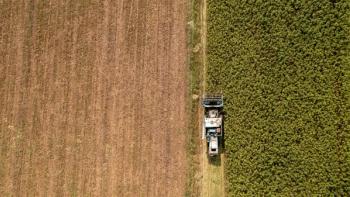
Cannabis Use During Pregnancy
In this research overview, Ruth Fisher, PhD, examines studies on various aspects of cannabis use and pregnancy, including effects and outcomes, risks, reasons for use, and the challenges inherent in the studies themselves.
Introduction
Several thoughts immediately came to mind with the idea of studying cannabis use during pregnancy. First, there’s the issue of trying to get good information on the effects of using cannabis while pregnant. It’s unethical to conduct controlled prospective studies on a subject like this, so researchers generally rely on retrospective observational reports. These types of studies have serious flaws. They tend to rely on self-reported data for information on cannabis use. Self-reported data in general is unreliable; self-reported data involving illegal activity or activity potentially perceived as morally questionable, such as using a drug while pregnant, is especially unreliable. Also, not only are the data as to whether or not subjects used cannabis while pregnant unreliable, but there is also generally no information as to the timing, frequency, quantity, concentration, duration, and/or form of cannabis use, all of which matter. Next, retrospective studies generally fail to control for other important factors that may lead to bad outcomes (for example, confounders), including use of other substances (medications, tobacco, alcohol, or other illicit drugs), lack of proper nutrition, stress, and more. Finally, participants in retrospective studies tend to involve non-representative selections of individuals, that is, participants whose outcomes do not generalize to the population as a whole.
The second thought that came to mind involved the effects themselves: what are the effects of using cannabis while pregnant? There’s an extensive, widely-known literature suggesting that cannabis use during pregnancy may have short and/or long-term implications for the child. As such, the third thought that came to mind was the question of whether or not women who consider using cannabis while pregnant know about these risks, and if so, do they consider these risks when deciding whether or not to use cannabis? If they do consider the risks, where do these women get the information they use to make their decisions, and is this good information? And the last thought that came to mind was: for women who use cannabis during pregnancy, why are they using it?
Let’s take these issues one by one.
Cannabis Use During Pregnancy: Outcomes
Problems with Self-Reported Data
Before discussing study outcomes, I’d like to quickly revisit the issue of problems with self-reported data. In a study conducted by Patricia Shiono et al (1), researchers asked participants the following question:
Furthermore, “The study protocol also required that serum be obtained at entry into the study (23 to 26 weeks’ gestation) for all women...” Researchers were then able to compare the reports of cannabis use with those whose serum levels indicated cannabis use, that is, tested positive (“Tested +”) vs. tested negative (“Tested –”).
As seen in Figure 1,
- Of the women reporting cannabis use (middle panel in the figure), only 43% tested positive for cannabis in their blood serum. Researchers speculated that perhaps only the chronic users tested positive.
- Of the women reporting no cannabis use (middle panel in the figure), 6% tested positive.
- Of the women testing positive for cannabis use (lower panel in the figure), 31% reported use, while 69% reported no use.
The data thus indicate that only a small portion (6%) of women who reported not using cannabis tested positive, but those women constituted a large portion of the women who actually tested positive (69%). We can speculate that these women who tested positive but did not report using cannabis are chronic users, that is, that only chronic users test positive. However, this is only speculation. An alternative hypothesis is that since people are highly variable in their metabolization of tetrahydrocannabinol (THC) (2), those who are better metabolizers, whether chronic users or not, may be more likely to test positive after use.
At the same time, a good number of participants reported use that was not detected. If these are casual users, then this suggests that it’s hard to capture casual use by testing blood serum. In this case, it’s extremely difficult to test for rates of underreporting in this population. Under the alternative just presented, these respondents who reported cannabis use but tested negative may be bad metabolizers of THC.
In short, the data suggest that a large portion of chronic users may underreport cannabis use, while rates of underreporting by casual users are difficult to quantify. However, this is all speculative and dependent on population variability in THC metabolization and the types of cannabis users that are captured by blood serum testing.
It’s also important to understand that asking pregnant women about their use of cannabisis likely to elicit a large amount of under-reporting. What this means, then, is that any studies based on self-reported use of cannabis by pregnant women are likely to be plagued by under-reporting of cannabis use, which may invalidate reported outcomes.
Study Outcomes
With that in mind, let’s now review the studies on outcomes associated with cannabis use during pregnancy. Jamie Lo et al (3) conducted a large meta study that attempted to account for the problems typically associated with such studies, for example, controlling for potential confounders, using a control group, etc. Adjustments to account for methodological problems reduced the magnitudes of the estimates, though they were still statistically significant, showing greater odds of negative outcomes with cannabis use. The researchers concluded (findings are summarized in Figure 2):
Other studies suggest there may be longer term effects on children associated with cannabis use by pregnant women, namely negative neurodevelopmental problems, “as demonstrated through a variety of outcomes related to mental health, attention, hyperactivity, impulsivity in childhood...” (4) However, as with the short-term outcomes reported in Figure 2, the evidence is uncertain. In addition to the other limitations for all these studies is the fact that they establish a potential correlation of negative outcomes with cannabis use during pregnancy, but not causation.
Cannabis Use During Pregnancy: Perspectives on Risk and Sources of Information
The next point of interest is the question of whether or not women who consider using cannabis while pregnant know about the potential risks of the negative outcomes just described, and if so, do they consider these risks when deciding whether or not to use cannabis? And if they do consider the risks, where do these women get the information, they use to make their decisions, and is this good information?
Meredith Vanstone et al (4) conducted a study to answer just these questions. The information reported in this section all come from this study.
These researchers note that the use of cannabis by pregnant women has been increasing over time with the increasing acceptance and prevalence of use in the general population. They note that studies suggest that anywhere from 2% to 36% of pregnant women may use cannabis, where these women invariably used cannabis before their pregnancy and then continued doing so while pregnant.
Interestingly, the researchers found that most studies of cannabis use by pregnant women involve multiple substances (alcohol, illicit drugs, and cannabis) and the researchers in these studies treat all the various substances unfavorably; in particular, they don’t recognize the therapeutic benefits of cannabis. In contrast, studies involving cannabis use alone recognize its therapeutic benefits. So, then the focus of cannabis-only studies tends to be on understanding the risk balance between benefits of use and potential for negative outcomes, while the focus of studies involving multiple substances is on strategies to decrease or stop substance use.
Most study participants recognized the risks and tried to balance those against the benefits of continued use. Many discussed efforts to decrease risks by using alternative forms of use or by decreasing the frequency or amount of use.
As for sources of information on using cannabis while pregnant, study participants sought information from four categories of sources: healthcare providers, the internet, friends and family, and cannabis retailers.
Healthcare providers were not a preferred source of information because they lacked clear information on the issue of cannabis use during pregnancy, and study participants reported being afraid of judgmental or punitive responses on the part of healthcare personnel.
The internet was a preferred source of information because study respondents could seek out information online anonymously.
Friends and family were consulted when they had information to share, and when this type of information was available, it was “powerful.”
Cannabis retailers were consulted where cannabis was legal.
Study participants who consulted multiple sources of information reported being forced to try to reconcile contradictory information.
Based on the study outcomes, the researchers drew the following conclusions:
I will note that women who agreed to be in the study do not necessarily represent all pregnant cannabis users, since many who do not share the same concerns would most likely either not agree to participate or would not respond honestly to researchers’ questions.
Cannabis Use During Pregnancy: Reasons for Use
The last point of interest is the question: What are the effects that women who use cannabis while pregnant trying to achieve?
Meredith Vanstone et al (5) conducted a study to answer this question, and the information reported in this section all come from this study.
The study involved 52 women who used cannabis before pregnancy, 30 of whom continued to use cannabis during their current or most recent pregnancy. Many of the women who chose not to continue using cannabis while pregnant cited a fear of potentially harming the fetus, while others reported abstaining due to “stigma, guilt, affordability, desire to remain alert and sober, and potential interference with other medications.”
The researchers found that the patterns of women’s cannabis use varied according to the stage—prepregnancy, pregnancy, lactation—with patterns changing between prepregnancy and pregnancy, then largely reverting back during lactation. There were three general categories of use:
Coping: “Refers to reasons for use that improve the user’s quality of life, help them cope with what they are facing, or ease difficult or unpleasant conditions.”
Sensation-Seeking: “Participants are using cannabis with a desire to get high or to create an altered state.”
Symptom Management: “This is the use of cannabis to treat symptoms that have become problematic or an impediment to daily functioning, either at the advice or under the guidance of a health professional (medically directed symptom management) or on their own (self-directed symptom management).”
Study respondents could report using cannabis for multiple reasons; counts of respondents by category are illustrated in Figure 3. Not surprisingly, Figure 3 shows that applications for many respondents shifted away from recreational purposes during pregnancy, but then returned somewhat to that use during lactation.
Again, as previously noted, women who agreed to be in the study do not necessarily represent all pregnant cannabis users, since many who do not share the same concerns would most likely either not agree to participate or would not respond honestly to researchers’ questions.
In Short
To sum it all up, there may be short term and/or longer-term risks to the well-being of fetuses and children whose mothers use cannabis while pregnant. However, more conclusive studies will be a long time in coming, given the vast array of difficulties in conducting such studies. The good news is that many pregnant women are aware of the potential risks, and try to weigh those risks against the therapeutic benefits to themselves of using cannabis while pregnant.The bad news is the dearth of good information available to these women who try to make well-informed decisions. In particular, the medical community must step up and do a better job of becoming informed on the issues and providing this information to women seeking guidance, in a safe and nonthreatening way.
References
- Shiono, P. H., et al, The impact of cocaine and marijuana use on low birth weight and preterm birth: A multicenter study. Am J Obstet Gynecol. 1995.
https://pubmed.ncbi.nlm.nih.gov/7847533/ - Kapur, B. M. and Aleksa, K., What the lab can and cannot do: clinical interpretation of drug testing results. Critical Reviews in Clinical Laboratory Science. 2020.
https://www.tandfonline.com/doi/full/10.1080/10408363.2020.1774493 - Lo, J.O., et al, Cannabis use in pregnancy and neonatal outcomes: a systematic review and meta-analysis. Cannabis Cannabinoid Res. 2023.
https://pubmed.ncbi.nlm.nih.gov/36730710/ - Vanstone, M., et al, Pregnant People’s Perspectives On Cannabis Use During Pregnancy: A Systematic Review and Integrative Mixed-Methods Research Synthesis. Journal of Midwifery & Women’s Health. 2022.
https://www.ncbi.nlm.nih.gov/pmc/articles/PMC9324983/ - Vanstone, M., et al, Reasons for cannabis use during pregnancy and lactation: a qualitative study. CMAJ. 2021.
https://www.ncbi.nlm.nih.gov/pmc/articles/PMC8687504/
About the Author
Ruth Fisher, PhD, is a systems design researcher and analyst. She analyzes markets to determine how environments shape outcomes. She is co-founder of CannDynamics, and author of The Medical Cannabis Primer and Winning the Hardware-Software Game: Using Game Theory to Optimize the Pace of New Technology Adoption. Dr. Fisher has worked in the technology and healthcare sectors on behalf of technology companies, early-stage researchers, physicians, and technology start-ups.
Newsletter
Unlock the latest breakthroughs in cannabis science—subscribe now to get expert insights, research, and industry updates delivered to your inbox.





